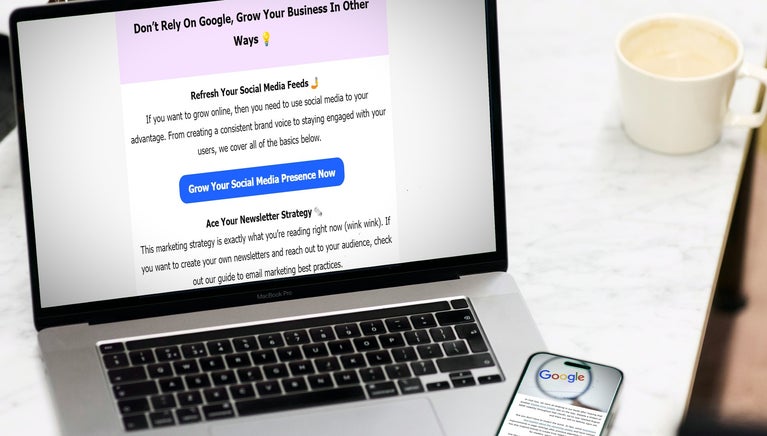Your Homepage SEO Checklist: 9 Ways To Optimize Your Homepage Today
We may receive a commission from our partners if you click on a link and purchase a product or service on their website. Learn more

Your homepage design is one of the most important aspects of your website and plays a vital role in your SEO strategy. Your audience and Google will use your homepage to understand what your website is about and access the pages they need.
To help your business optimize this page and potentially boost your rankings, I’ve put together a handy homepage SEO checklist featuring nine key steps you should consider.
Your Homepage SEO Checklist for 2025
For effective homepage SEO, your main aim is to provide a fantastic user experience and demonstrate what your website is about to users. Fulfilling these needs can increase user engagement on your website. This tells Google that people are spending more time on your website and are finding its contents useful, potentially boosting your homepage ranking in the process.
Follow these nine key steps when working on your homepage SEO:
- Use text sparingly – Don’t bog down visitors with excessive text. Instead, only feature the most relevant information that will fulfil user needs. Visual cues are a fantastic way to convey important information instead.
- Have a clean website navigation bar – For an optimal user experience, check that your navigation bar is simple, visible, responsive on phone and desktop devices, and features the most important categories first.
- Only use internal links that make sense – Don’t overload your homepage with too many internal links. Instead, strategically place links that your website visitors will be most interested in, such as links to your key product pages or booking pages.
- Organize your homepage with headings – To help users scan your homepage, make sure that you’ve used headings correctly. Use a H1 for your title, H2s for crucial sections, and H3s for subsections.
- Improve your website speeds – A slow loading homepage is likely to frustrate users and make them leave your website early. You can use free page speed testing tools like PageSpeed Insights to test your current speeds and start optimizing your page if needed.
- Write alternative text for each photo – If your homepage’s images fail to load on a device, alternative text will tell users what’s contained in each photo.
- Write calls to action – A strong call to action button can transform a lead into a paying customer. Include one or two buttons on your homepage that will inspire users to take action. Remember to use clear color contrast to make them stand out.
- Add social proof to your homepage – Social proof, such as customer reviews or client testimonials, is a great way to build trust with your audience. If a visitor can see that others have bought from you or used your services before, they may be persuaded to engage with your business as well.
- Add imagery that showcases your branding – Your unique branding should be obvious as soon as a visitor lands on your homepage. Have a clear logo and color scheme alongside imagery that reflects what your business’ primary offering is.

Before You Start: What To Know About Homepage SEO Keywords
When mulling over SEO, it’s likely that you’ll think about conducting keyword research first – however, you need to approach keywords with a bit more caution on your homepage.
Though you might want to rank for a keyword that represents your website’s flagship product or service, this may prove difficult. For example, if you’re trying to target “yoga mats” on your homepage, you’ll also be in competition with other, more well known businesses vying to rank for this popular keyword.

Additionally, you may run into keyword cannibalization issues if you don’t choose your keywords wisely. For example, if your homepage and one of your category pages are both targeting “yoga mats,” Google may struggle to know which page to rank first, potentially damaging your page rankings in the process.
But don’t get me wrong – you should still be trying to rank for a few keywords on your homepage. Just be mindful of the keywords you’re choosing. Here are a few pointers to get you started:
- Target a branded keyword that features your business name and add this to the start of your homepage’s meta title
- Include descriptive keywords that relate to your business’ key purpose and include the most important one in your H1 title
Remember, stick to a few relevant keywords to not confuse Google (or your customers) about what your company does.
Homepage SEO Checklist: Final Thoughts
Though keywords do have a degree of importance for homepage SEO, they shouldn’t be your primary focus. Instead, concentrate on providing users with a superb customer experience.
This user experience should include streamlined navigation making it easy for them to browse key webpages, as well as branded homepage content that helps them understand your business. By following the checklist, you’ll be well on your way to making your homepage as useful as possible to users and Google.





Leave a comment